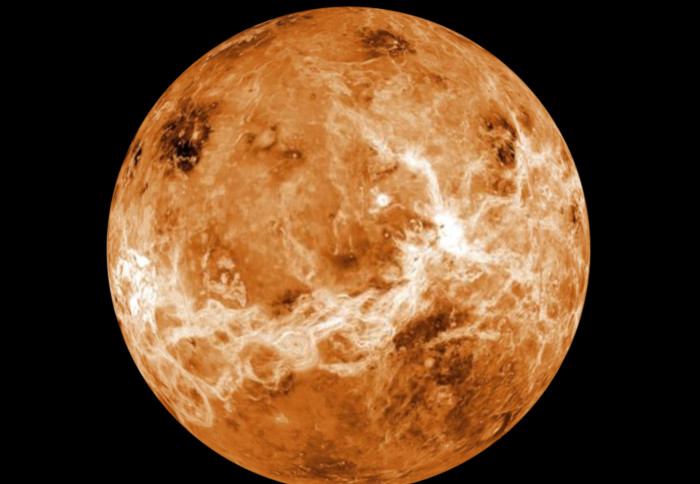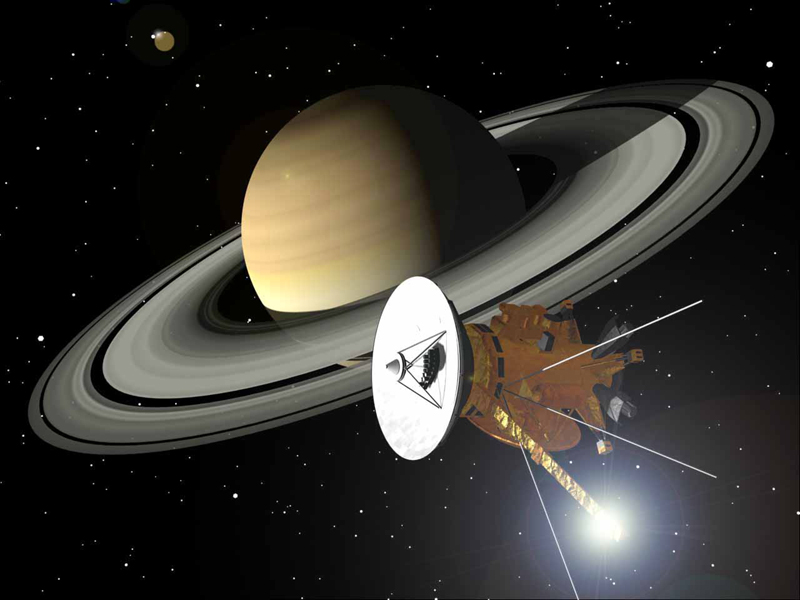New Year's Day to Candlemas - Quiz

Candlemas bells (snowdrops) [RHS Garden, Rosemoor]
Exploration, famous birthdays and ancient festivals in the time between January 1st and Candlemas at the start of February. Here's a little quiz for you that picks out some highlights in this period.
Quiz: New Year's Day to Candlemas
1. In January 1610 Galileo first saw the moons of Jupiter known, in his honor, as the “Galilean moons”. Two moons Galileo did not discover are: (C) Enceladus and Titan.
Enceladus and Titan are Saturn's moons.
2. By the modern Gregorian calendar, Isaac Newton was born in January 1643. According to the old Julian calendar, he was born on (B) Christmas Day 1642.
Newton was born over a century before Britain adopted the Gregorian calendar.
3. The mastermind of the early Soviet space program was born in January 1907. Called the Chief Designer, his name was a state secret. He was (A) Sergei Korolev.
Gagarin, a worldwide celebrity, was the first human to orbit the Earth. Tsiolkovsky was one of the founding fathers of rocketry and astronautics. He was developing the theory and doing the math for multistage rockets in the early 20th century, and died long before they became a reality.
4. Two probes landed on Mars in January 2004. They were (B) Spirit and Opportunity.
Viking 2 was a lander that operated for over over three and a half years from September 1976. Beagle 2 landed in December 2003, but its mission failed when the solar panels failed to deploy. Sojourner was the rover for the Mars Pathfinder mission in 1997. Curiosity has been busy since landing on Mars in 2012.
5. Discovered in January 2005, UB313 prompted a serious debate about the definition of a planet. It's now called (C) Eris.
Makemake (discovered March 31, 2005) is officially listed as a dwarf planet. Although there is considerable evidence that Quaoar meets the criteria for a dwarf planet, the International Astronomical Union has yet to recognize it as such.
6. A great Polish astronomer and celestial cartographer was born in Gdańsk on January 28, 1611, and died in Gdańsk on his 76th birthday. He was (A) Johannes Hevelius.
Copernicus (1473-1543) wrote On the Revolutions of the Celestial Spheres, setting out evidence and arguments in favor of a Sun-centered Solar System. Wolszczan was one of the discoverers of the first known extrasolar planets. Strangely, they orbit a pulsar, the core of a massive star that exploded as a supernova.
7. The stars of the Winter Triangle are (A) Betelgeuse, Sirius, Procyon.
Arcturus, Spica and Regulus form the Spring Triangle, and Deneb, Altair and Vega make up the Summer Triangle.
8. In January 2006 a NASA mission was launched to study Pluto and the Kuiper Belt – it was called (C) New Horizons.
Rosetta was the European Space Agency (ESA) mission to Comet Churyumov-Gerasimenko, and Dawn was NASA's mission to the asteroid belt objects Vesta and Ceres.
9. The meteor shower peaking soon after New Year's Day is the (B) Quadrantids.
The Quadrantids were named for a constellation called Quadrans Muralis that didn't make it into the 88 official constellations of the International Astronomical Union. The radiant of the Quadrantid shower, which peaks January 3-4, makes an approximate right angle with the star Arcturus and the Big Dipper. The Geminids are in December and the Perseids in August.
10. Imbolc, the traditional beginning of the Celtic spring, is on or near February 1st, as are some other spring observances, including Candlemas and (A) Groundhog Day.
Groundhog Day on February 2nd is probably a remnant of a part of ancient Celtic spring rites of animal divination. St Swithin's Day is in July, and Michaelmas is in September.
How did you do?
Did you get most of the answers right? If not, would you do better next time from what you've learned? Click on “Post your thoughts” to comment, see what other people say, or find out what's new.
Exploration, famous birthdays and ancient festivals in the time between January 1st and Candlemas at the start of February. Here's a little quiz for you that picks out some highlights in this period.
Quiz: New Year's Day to Candlemas
- In January 1610 Galileo first saw the moons of Jupiter known, in his honor, as the “Galilean moons”. Two moons Galileo did not discover are: (A) Europa and Ganymede; (B) Callisto and Io; (C) Enceladus and Titan.
- By the modern Gregorian calendar, Isaac Newton was born on January 4, 1643. According to the old Julian calendar, he was born on: (A) St Stephen's Day (Boxing Day) 1642; (B) Christmas Day 1642; (C) Epiphany 1643.
- The mastermind of the early Soviet space program was born in January 1907. Called the Chief Designer, his name was a state secret. He was: (A) Sergei Korolev; (B) Yuri Gagarin; (C) Konstantin Tsiolkovsky.
- In January 2004, two probes landed on Mars. They were: (A) Viking 2 and Beagle 2; (B) Spirit and Opportunity; (C) Sojourner and Curiosity.
- Discovered in January 2005, UB313 prompted a serious debate about the definition of a planet. It's now called: (A) Quaoar; (B) Makemake; (C) Eris.
- A great Polish astronomer and celestial cartographer was born in Gdańsk on January 28, 1611, and died in Gdańsk on his 76th birthday. He was: (A) Johannes Hevelius; (B) Nicolaus Copernicus; (C) Aleksander Wolszczan.
- The stars of the Winter Triangle are: (A) Betelgeuse, Sirius, Procyon; (B) Arcturus, Spica, Regulus; (C) Deneb, Altair, Vega.
- In January 2006 a NASA mission was launched to study Pluto and the Kuiper Belt – it was called: (A) Rosetta; (B) Dawn; (C) New Horizons.
- The meteor shower peaking soon after New Year's Day is the: (A) Geminids; (B) Quadrantids; (C) Perseids.
- Imbolc, the traditional beginning of the Celtic spring, is on or near February 1st, as are other spring observances, including: (A) Groundhog Day; (B) St Swithin's Day; (C) Michaelmas.
1. In January 1610 Galileo first saw the moons of Jupiter known, in his honor, as the “Galilean moons”. Two moons Galileo did not discover are: (C) Enceladus and Titan.
Enceladus and Titan are Saturn's moons.
2. By the modern Gregorian calendar, Isaac Newton was born in January 1643. According to the old Julian calendar, he was born on (B) Christmas Day 1642.
Newton was born over a century before Britain adopted the Gregorian calendar.
3. The mastermind of the early Soviet space program was born in January 1907. Called the Chief Designer, his name was a state secret. He was (A) Sergei Korolev.
Gagarin, a worldwide celebrity, was the first human to orbit the Earth. Tsiolkovsky was one of the founding fathers of rocketry and astronautics. He was developing the theory and doing the math for multistage rockets in the early 20th century, and died long before they became a reality.
4. Two probes landed on Mars in January 2004. They were (B) Spirit and Opportunity.
Viking 2 was a lander that operated for over over three and a half years from September 1976. Beagle 2 landed in December 2003, but its mission failed when the solar panels failed to deploy. Sojourner was the rover for the Mars Pathfinder mission in 1997. Curiosity has been busy since landing on Mars in 2012.
5. Discovered in January 2005, UB313 prompted a serious debate about the definition of a planet. It's now called (C) Eris.
Makemake (discovered March 31, 2005) is officially listed as a dwarf planet. Although there is considerable evidence that Quaoar meets the criteria for a dwarf planet, the International Astronomical Union has yet to recognize it as such.
6. A great Polish astronomer and celestial cartographer was born in Gdańsk on January 28, 1611, and died in Gdańsk on his 76th birthday. He was (A) Johannes Hevelius.
Copernicus (1473-1543) wrote On the Revolutions of the Celestial Spheres, setting out evidence and arguments in favor of a Sun-centered Solar System. Wolszczan was one of the discoverers of the first known extrasolar planets. Strangely, they orbit a pulsar, the core of a massive star that exploded as a supernova.
7. The stars of the Winter Triangle are (A) Betelgeuse, Sirius, Procyon.
Arcturus, Spica and Regulus form the Spring Triangle, and Deneb, Altair and Vega make up the Summer Triangle.
8. In January 2006 a NASA mission was launched to study Pluto and the Kuiper Belt – it was called (C) New Horizons.
Rosetta was the European Space Agency (ESA) mission to Comet Churyumov-Gerasimenko, and Dawn was NASA's mission to the asteroid belt objects Vesta and Ceres.
9. The meteor shower peaking soon after New Year's Day is the (B) Quadrantids.
The Quadrantids were named for a constellation called Quadrans Muralis that didn't make it into the 88 official constellations of the International Astronomical Union. The radiant of the Quadrantid shower, which peaks January 3-4, makes an approximate right angle with the star Arcturus and the Big Dipper. The Geminids are in December and the Perseids in August.
10. Imbolc, the traditional beginning of the Celtic spring, is on or near February 1st, as are some other spring observances, including Candlemas and (A) Groundhog Day.
Groundhog Day on February 2nd is probably a remnant of a part of ancient Celtic spring rites of animal divination. St Swithin's Day is in July, and Michaelmas is in September.
How did you do?
Did you get most of the answers right? If not, would you do better next time from what you've learned? Click on “Post your thoughts” to comment, see what other people say, or find out what's new.
You Should Also Read:
When Does the New Year Begin
Cosmonauts - Birth of the Space Age
Groundhog Day

Related Articles
Editor's Picks Articles
Top Ten Articles
Previous Features
Site Map
Content copyright © 2023 by Mona Evans. All rights reserved.
This content was written by Mona Evans. If you wish to use this content in any manner, you need written permission. Contact Mona Evans for details.







